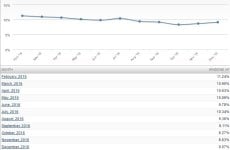- Oct 23, 2012
- 12,527
You’d normally expect an operating system that’s 15-years-old to be the last thing computer users want to install, especially given the fact that there are so many other alternatives, including several of them that are direct successors to this ancient piece of software.
For some users out there, Windows XP seems to be just like a bottle of fine wine: the older it is, the better is gets, and people somehow still find a good reason to install it.
Living proof is the latest batch of statistics provided by NetMarketShare for the month of December 2016, which shows that Windows XP actually recovered last month and is again running on more than 9 percent of the world’s desktop computers.

Believe it or not!!!
For some users out there, Windows XP seems to be just like a bottle of fine wine: the older it is, the better is gets, and people somehow still find a good reason to install it.
Living proof is the latest batch of statistics provided by NetMarketShare for the month of December 2016, which shows that Windows XP actually recovered last month and is again running on more than 9 percent of the world’s desktop computers.

Specifically, Windows XP continues to be the world’s third most popular desktop OS, but what’s more worrying is that it’s actually increasing its market share, so instead of giving up on it, some people actually decide to deploy this OS on their computers.
Ups and downs (but mostly ups)
Windows XP no longer receives support since April 2014, which means that Microsoft is no longer patching vulnerabilities that it finds in the operating system. Instead, users who are still running Windows XP become vulnerable to attacks, as cybercriminals can always attempt to exploit vulnerabilities that they discover in the OS and which are left unfixed.
For what it’s worth, Windows XP has been on a declining trend ever since Microsoft pulled support, but there were months when it actually recovered for reasons we can’t actually understand.
For example, Windows XP dropped from 10.09 percent in May 2016 to 9.78 percent the next month, before growing to 10.34 percent once again in July. Declines were recorded until November when it recorded a growth from 8.27 percent the month before to 8.63 percent. And this growth continued in December to reach 9.07 percent.
This means that in just two months, an operating system that no longer receives updates since 2014 increased from 8.27 percent to 9.07 percent, in a time when Microsoft is pushing for everyone to adopt Windows 10.
It goes without saying that everyone on Windows XP should consider updating to newer Windows as soon as possible because the security risks are obvious. And yet, we’re pretty sure that Windows XP will continue to be around for a while.
Believe it or not!!!

